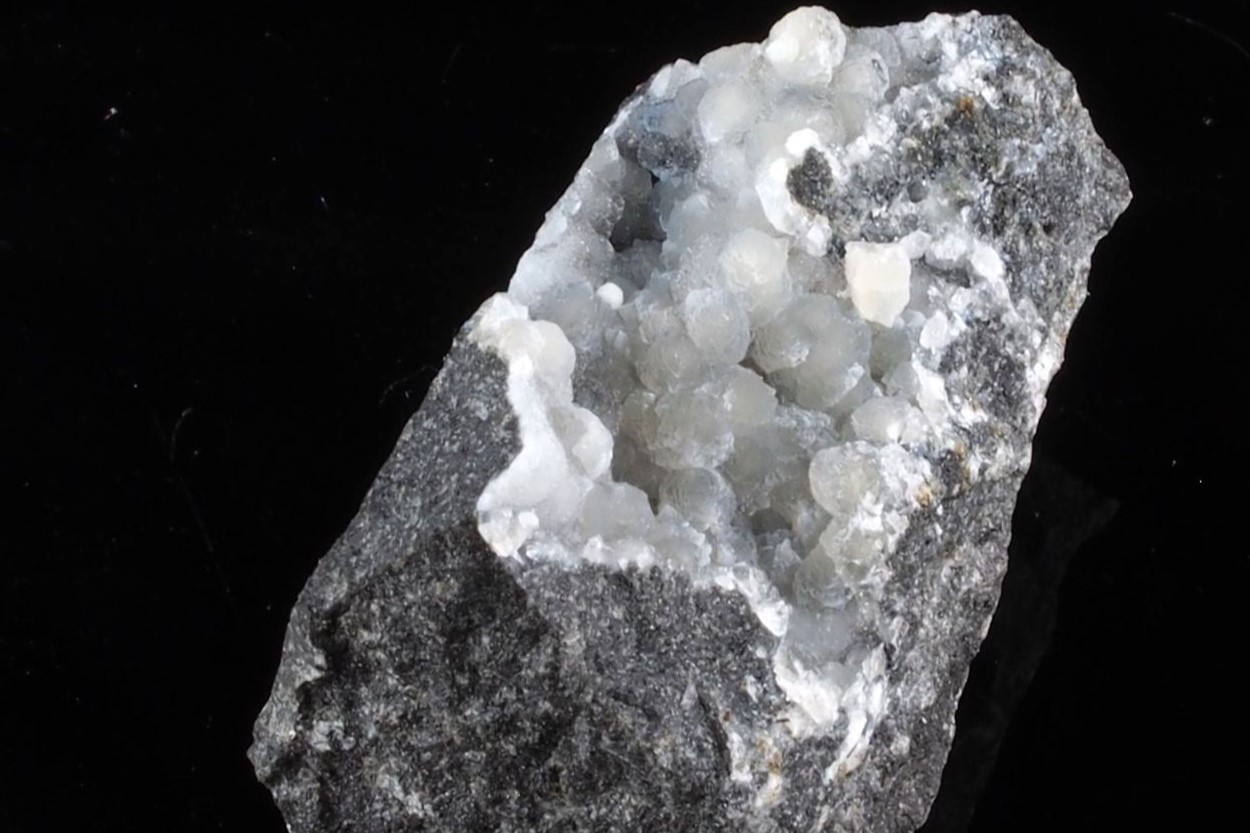
Motukoreaite might sound like a tongue-twister, but it's a fascinating mineral with a unique story. Found primarily in New Zealand, this mineral is named after Motukorea Island, where it was first discovered. Motukoreaite is a hydrous magnesium aluminum carbonate hydroxide, which means it contains water, magnesium, aluminum, carbonate, and hydroxide. Its crystal structure is quite intricate, making it a subject of interest for geologists and mineral enthusiasts alike. This mineral often appears in white, pale yellow, or colorless forms, adding to its visual appeal. Whether you're a budding geologist or just curious about the natural world, learning about Motukoreaite offers a glimpse into the complexities of Earth's geological processes. Ready to dive into 25 intriguing facts about this remarkable mineral? Let's get started!
Key Takeaways:
- Motukoreaite is a rare mineral found on Motukorea Island in New Zealand. It has a unique chemical composition and forms in hydrothermal environments, making it a prized specimen for mineral collectors and a valuable tool for studying geological history.
- With its fascinating properties and history, Motukoreaite is a valuable resource for scientific research and educational purposes. Its presence can also provide clues about past hydrothermal activity and geological conditions, making it a captivating subject for geology enthusiasts.
What is Motukoreaite?
Motukoreaite is a rare mineral that has intrigued geologists and mineralogists alike. Named after Motukorea Island in New Zealand, this mineral has unique properties and a fascinating history. Let's dive into some interesting facts about Motukoreaite.
-
Discovery Location: Motukoreaite was first discovered on Motukorea Island, also known as Browns Island, in New Zealand.
-
Chemical Composition: This mineral is a hydrated sodium magnesium aluminum phosphate carbonate hydroxide. Its complex formula is NaMgAl₆(PO₄)₄(CO₃)(OH)₆·4H₂O.
-
Crystal System: Motukoreaite belongs to the trigonal crystal system, which means its crystals form in a threefold rotational symmetry.
-
Color: Typically, Motukoreaite is white or colorless, making it visually appealing to collectors.
-
Luster: It has a vitreous to pearly luster, giving it a shiny, glass-like appearance.
-
Transparency: This mineral ranges from transparent to translucent, allowing light to pass through it to varying degrees.
Physical Properties of Motukoreaite
Understanding the physical properties of Motukoreaite can help in identifying and studying this mineral. Here are some key characteristics.
-
Hardness: On the Mohs scale, Motukoreaite has a hardness of about 3, making it relatively soft compared to other minerals.
-
Specific Gravity: Its specific gravity ranges from 2.2 to 2.4, indicating it is not particularly dense.
-
Cleavage: Motukoreaite exhibits perfect cleavage in one direction, meaning it splits easily along a specific plane.
-
Fracture: When broken, it has an uneven fracture, which is common among minerals with perfect cleavage.
-
Streak: The streak of Motukoreaite, which is the color of its powdered form, is white.
Formation and Occurrence
Motukoreaite forms under specific geological conditions. Here are some facts about its formation and where it can be found.
-
Formation Environment: It typically forms in hydrothermal environments, where hot, mineral-rich water interacts with rocks.
-
Associated Minerals: Often found alongside other minerals like calcite, aragonite, and hydromagnesite.
-
Geological Setting: Commonly occurs in volcanic and sedimentary rocks, particularly in areas with significant hydrothermal activity.
-
Global Occurrences: Besides New Zealand, Motukoreaite has been found in other parts of the world, including Italy, the United States, and Russia.
Uses and Applications
While not widely used in commercial applications, Motukoreaite has some interesting uses and significance.
-
Scientific Research: Primarily studied for its unique chemical composition and formation processes.
-
Educational Purposes: Often used in educational settings to teach students about mineralogy and crystallography.
-
Collector's Item: Due to its rarity and unique properties, it is a prized specimen for mineral collectors.
Interesting Tidbits
Here are some lesser-known facts that add to the intrigue of Motukoreaite.
-
Name Origin: The name "Motukoreaite" is derived from the Maori name for Browns Island, "Motukorea."
-
First Described: It was first described in scientific literature in 1977, making it a relatively recent discovery in the world of mineralogy.
-
Hydration: The mineral contains water molecules within its structure, which is why it is classified as a hydrated mineral.
-
Stability: Motukoreaite is stable under normal environmental conditions but can dehydrate when exposed to high temperatures.
-
Synthetic Production: Scientists have successfully synthesized Motukoreaite in laboratories to study its properties more closely.
-
Environmental Indicators: Its presence can indicate past hydrothermal activity in the area, providing clues about the geological history.
-
Unique Structure: The combination of phosphate, carbonate, and hydroxide ions in its structure makes it a subject of interest for crystallographers.
The Final Word on Motukoreaite
Motukoreaite, a rare mineral, has captured the interest of geologists and mineral enthusiasts alike. Found primarily in volcanic environments, this mineral's unique properties and formation process make it a subject of fascination. Its chemical composition includes magnesium, aluminum, and sulfate, contributing to its distinct characteristics. While not widely known, motukoreaite's rarity adds to its allure, making it a prized specimen for collectors.
Understanding motukoreaite offers insights into volcanic activity and mineral formation. Its presence in specific geological settings helps scientists piece together Earth's dynamic processes. Whether you're a seasoned geologist or just curious about the natural world, motukoreaite stands as a testament to the planet's complexity and beauty. Keep exploring, and who knows what other hidden gems you might uncover in the world of minerals!
Frequently Asked Questions
Was this page helpful?
Our commitment to delivering trustworthy and engaging content is at the heart of what we do. Each fact on our site is contributed by real users like you, bringing a wealth of diverse insights and information. To ensure the highest standards of accuracy and reliability, our dedicated editors meticulously review each submission. This process guarantees that the facts we share are not only fascinating but also credible. Trust in our commitment to quality and authenticity as you explore and learn with us.
